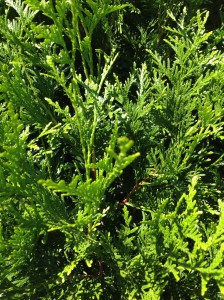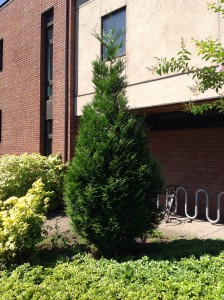Genus: Cedrus
Family: Pinaceae
These are the “true” cedars. None of them are native to Oregon, but they have been widely planted here over the past 100 years.
If the tree you’re looking for doesn’t appear on this page, it’s probably not a true cedar. Oregon has four native trees that are members of the Cypress family but use the word “cedar” in their common names:Alaska-cedar, Incense-cedar, Port-Orford-cedar, and Western Redcedar. The common names for those trees are merged or written with hyphens to distinguish them from the true cedars listed here.
Atlas Cedar
Scientific name: Cedrus atlantica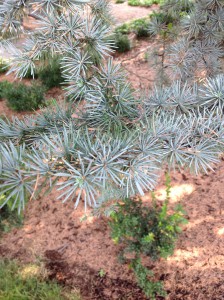
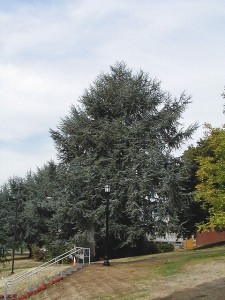 Native to the Atlas mountains of Algeria and Morocco, this tree can grow to 60 feet or more. The Atlas Cedar has a green and a blue form, the latter being much more common in cultivation. The needles of the blue form can vary from blue to blue-gray to blue-green, depending on the cultivar.
Native to the Atlas mountains of Algeria and Morocco, this tree can grow to 60 feet or more. The Atlas Cedar has a green and a blue form, the latter being much more common in cultivation. The needles of the blue form can vary from blue to blue-gray to blue-green, depending on the cultivar.
View tree page and map.Cedar of Lebanon
Scientific name: Cedrus libani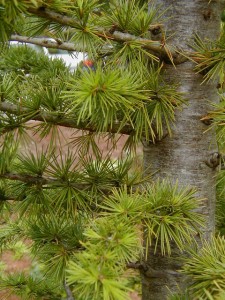
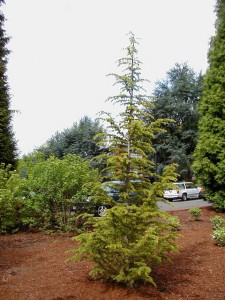 This tree is native to Lebanon and southwest Turkey. It grows slowly but can eventually reach 130 feet in height and spread more than 40 feet across. Older trees have a distinctive profile, with arched branches holding broad, flat sprays of foliage.
This tree is native to Lebanon and southwest Turkey. It grows slowly but can eventually reach 130 feet in height and spread more than 40 feet across. Older trees have a distinctive profile, with arched branches holding broad, flat sprays of foliage.
View tree page and map.Deodar Cedar
Scientific name: Cedrus deodara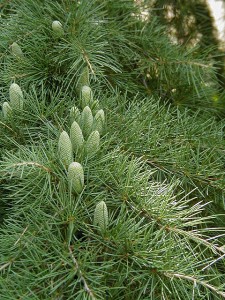
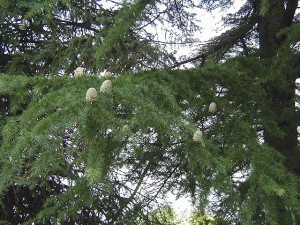 This is the most refined, graceful and soft-textured cedar. Lower branches sweep to the ground, while upper branches are evenly spaced. The needles grow in typical cedar clusters but are a soft, light green color. The fastest growing of the cedars, its drooping tip makes it recognizable on the skyline. Deodars are native to the Himalayas. They are frequently planted in Portland, and some of the most beautiful varieties can be found on the Reed campus and the Eastmoreland Golf Course.
This is the most refined, graceful and soft-textured cedar. Lower branches sweep to the ground, while upper branches are evenly spaced. The needles grow in typical cedar clusters but are a soft, light green color. The fastest growing of the cedars, its drooping tip makes it recognizable on the skyline. Deodars are native to the Himalayas. They are frequently planted in Portland, and some of the most beautiful varieties can be found on the Reed campus and the Eastmoreland Golf Course.
View tree page and map.Hogan’s Cedar
Scientific name: Thuja plicata 'Hogan’
